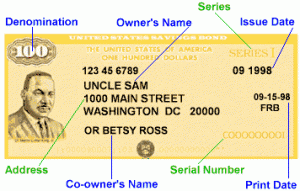Checks are special pieces of paper, with security markings and magnetic inks to help them go through sorting machines. They look fancier than regular notes, because they can be turned into money! Click on each number to see what that part of the check is for, and how to fill it out.
1. Name and address: This tells the bank who wrote the check and how to reach them. Sometimes you will see telephone numbers or identification numbers in this spot, too.
2. Check number: This number helps you keep track of the checks you’ve written, how much they were for, and who you’ve paid. You should keep a list of every check you write.
3. Date: What day is it? Write the date here. This tells the bank when you promised to pay the money.
4. Pay to the order of: Who are you writing the check to? Write their name here. Putting someone’s name here means that they can ask the bank to pay them from your checking account.
5. Amount: How much are you paying? Write the amount in numbers here. You can write the number in decimals (20.00) or as a fraction (20 00/100). Write clearly, so there’s no confusion about how much you mean to pay.
6. Amount: How much was that again? Just so there’s no confusion, write the amount again – but this time, in words (twenty) with a fraction (00/100). This makes sure that no one can change the amount on the check after you write it.
7. Bank name: This tells everyone where your checking account is.
8. Memo: This is a space to help you remember what you wrote the check for. You can write anything you like here, like “Legos” or “pizza.” If you are paying a bill that has its own account number, you should write that account number here.
9. Your Account Number and the Bank Routing Number: These numbers tell other banks whose money will pay this check. On most checks, these numbers are printed in magnetic ink so that scanners can read them quickly.
10. Signature: Sign your check here! You shouldn’t sign a check until it is completely filled out — because once you sign a check, it’s money. Your signature here is your promise to pay.


